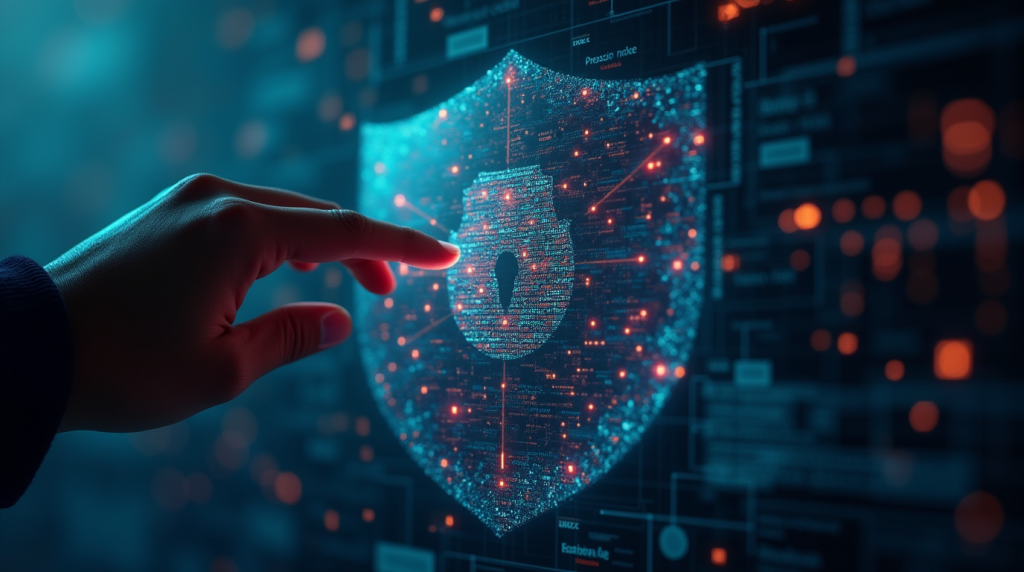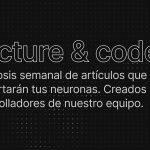We all know by now that artificial intelligence is gradually revolutionizing the way we work and that this trend will continue to grow, but there is one area in which the emergence of AI is particularly sensitive and that is, in particular, cybersecurity.
The impact of AI on computer security, both equipment and data, is being really brutal, if before the existence of bots was already a big headache to keep our data safe, imagine now that they are able to learn and improve, but not all are threats, AI also brings many advantages to maintain the security of our data and equipment, let's see these two sides analyzing both the advantages and threats posed by artificial intelligence for cybersecurity.
Where I can use AI to protect myself

Smart authentication and fraud detection
It is very common to see authentication systems that, through artificial intelligence, recognize our patterns such as our face or our voice and apply them to recognize that we are us. These patterns are becoming more and more complex since, in the same way that an AI can recognize our face, it is also easier for it to replicate it, so it starts to analyze many other aspects that, at the time of developing them, would be quite complicated to cover, such as discovering patterns that would not be typical of a human, or response times that are too short. AI recognizes these types of variables much better than we do and can detect suspicious accesses very effectively.
Vulnerability and code analysis
Many well-trained AI models can help us identify potential weaknesses in applications or infrastructures that could be exploited by attackers. For example, a model trained with common bugs could detect very quickly if within a given piece of code or project there are bugs that could lead to vulnerabilities.
Artificial intelligence is very good at detecting, for example, possible holes where malicious SQL can be injected. Another example in which it can help us a lot would be monitoring when deserializing data coming from an external source, checking that this deserialization does not include malicious code that can be placed on our server, for example.
Threat and anomaly detection
One of the aspects on which we, among many other companies, have been working the most lately is the monitoring of network traffic packets. This point is usually one of the most critical when it comes to vulnerabilities slipping through unnoticed. Through AI, we can have an agent permanently monitoring this communication that can detect unusual or malicious patterns in network traffic and files.
In a little time we will go deeper into this topic, as we are currently working on a project that will be very disruptive in this point, it is being one of our flagship projects. We will keep you informed.
Preventive or predictive threat analysis
We can perform, using artificial intelligence, different scans and tests on our software or infrastructure to detect possible errors or threats. It is also very useful to launch simulations of attacks and thus identify weak points that we may have, sure to come up with options or ways to attack that we had not foreseen.
This predictive analysis, carried out on a regular basis, will greatly help us to improve the security of our equipment and networks as well as our applications and software.
What are the main threats posed by AI to cybersecurity?

Code created with AI
Paradoxically, one of the main vulnerabilities we are encountering today is the very code created with artificial intelligence. Let's not forget that the different models have been trained with a code base written by humans, and of course, much of that code is unsafe code so AI tends to replicate these patterns.
One of the things we have to keep in mind is that all code created by AI, nowadays, must be reviewed by a human and, if possible, have a security test performed on it. We can even use the tools mentioned earlier in this article to verify that the code is indeed secure.
We can no longer rely on our senses
This is perhaps the point that will be hardest for us as humans to accept. It is probably the first time that we seriously have to ask ourselves if what we are seeing, hearing and hearing is really what it seems to be.
We have all seen videos, images. We have heard audios generated by AI that are really artificially created but whose realism makes us doubt if it is really that person in that image or video or if it is generated with artificial intelligence. I myself have trained a model that creates photos of me for social networks, youtube thumbnails, etc... to the point that I myself am surprised at how well generated most of them are.
We are certainly going to have to develop this ability to be suspicious of what we are seeing, or at least assume that there is a possibility that it is generated by artificial intelligence because, in addition, this is going to increase. We're going to find more and more AI-generated content, so it's going to be commonplace and we're going to have to develop the means to quarantine certain content.
As a summary, artificial intelligence is revolutionizing cybersecurity with benefits such as intelligent authentication, vulnerability scanning and threat detection, significantly improving risk prevention and response capabilities.
However, it also poses significant challenges, such as the use of AI-generated code that can replicate human errors and the difficulty of discerning between the real and the artificially generated. This double-edged sword underscores the need to combine advanced technologies with rigorous human reviews to take advantage of their benefits without compromising security.
If you want to learn more about this topic, I share with you this CCN-CERT article (National Cryptologic Center) in which a detailed study of best practices in this area at the intersection between artificial intelligence and cybersecurity is made.


